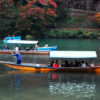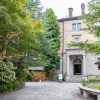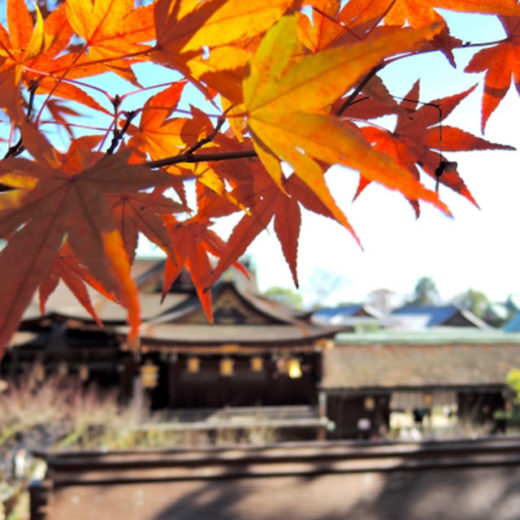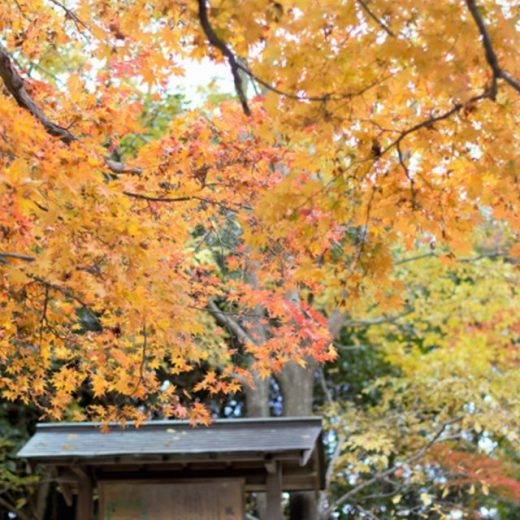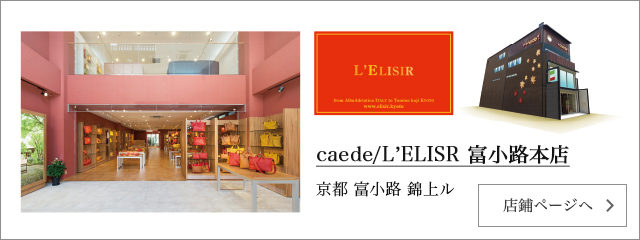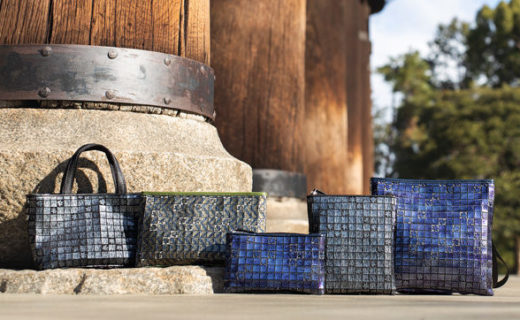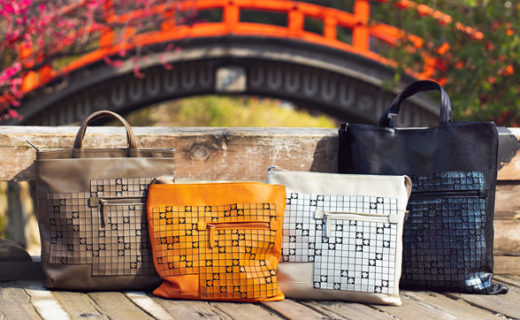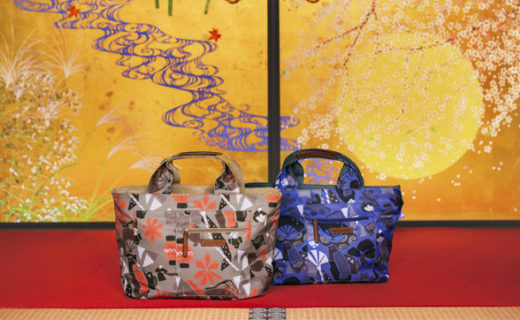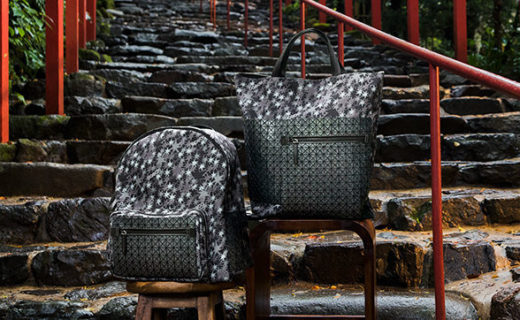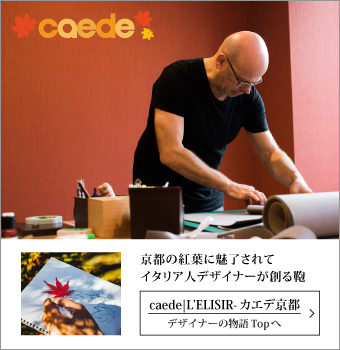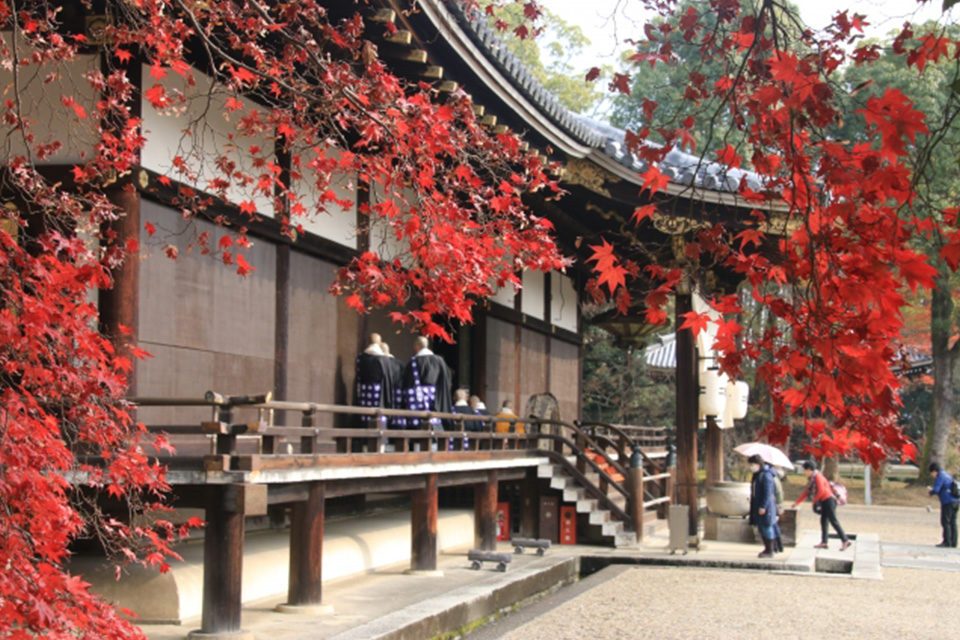
Generally named as Randen Tram, Keifuku Electric Railroad was an old electric tram started in 108 years ago. Need to know that the roadsides from Kitano-Hakubaicho Station to Katabiranotsuji Station are full of red leaves. The Kitano Line is in length 3.8km with 10 stops. This time starts from Myoshin-ji Temple to enjoy the red leaves along the Kitano Line.
Kitano Tenmangu Shrine
 The closest red leaves tourist spot of Kitano-Hakubaicho Station at Kitano Line, the starting station of the line. The tea room Momiji-en (autumn maple garden) inside the shrine is the place to enjoy red leaves. Especially, at the night time with light-up service. In early May with summer breeze, the Bai-en (ume garden) will also open to public to admire green maple leaves.
Click here for more information
The closest red leaves tourist spot of Kitano-Hakubaicho Station at Kitano Line, the starting station of the line. The tea room Momiji-en (autumn maple garden) inside the shrine is the place to enjoy red leaves. Especially, at the night time with light-up service. In early May with summer breeze, the Bai-en (ume garden) will also open to public to admire green maple leaves.
Click here for more information
Toji-in Temple
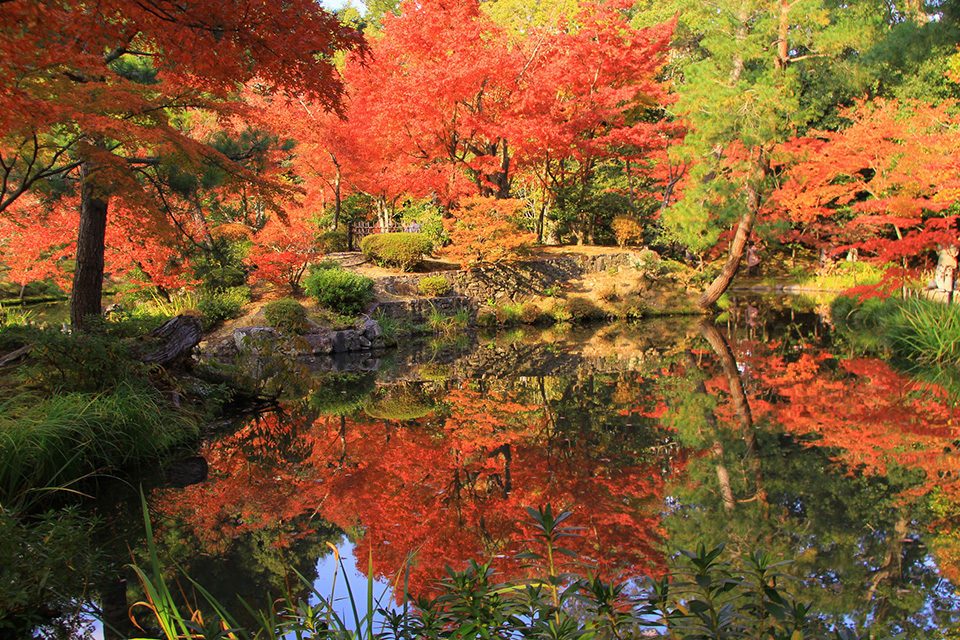 The Bodaiji Temple (family temple) of Ashikaga family, who were the Sei-i Taishogun built Ashikaga shogunate. It is closed to Toji-in Temple Station. It belongs to Tenryu-ji Temple Party of Linji school. The inner garden same as Sogenchi Garden of Tenryu-ji Temple, designed by Muso Soseki. Take a walk in the garden is the best way to enjoy red leaves in detail.
Click here for more information
The Bodaiji Temple (family temple) of Ashikaga family, who were the Sei-i Taishogun built Ashikaga shogunate. It is closed to Toji-in Temple Station. It belongs to Tenryu-ji Temple Party of Linji school. The inner garden same as Sogenchi Garden of Tenryu-ji Temple, designed by Muso Soseki. Take a walk in the garden is the best way to enjoy red leaves in detail.
Click here for more information
Ryoan-ji Temple
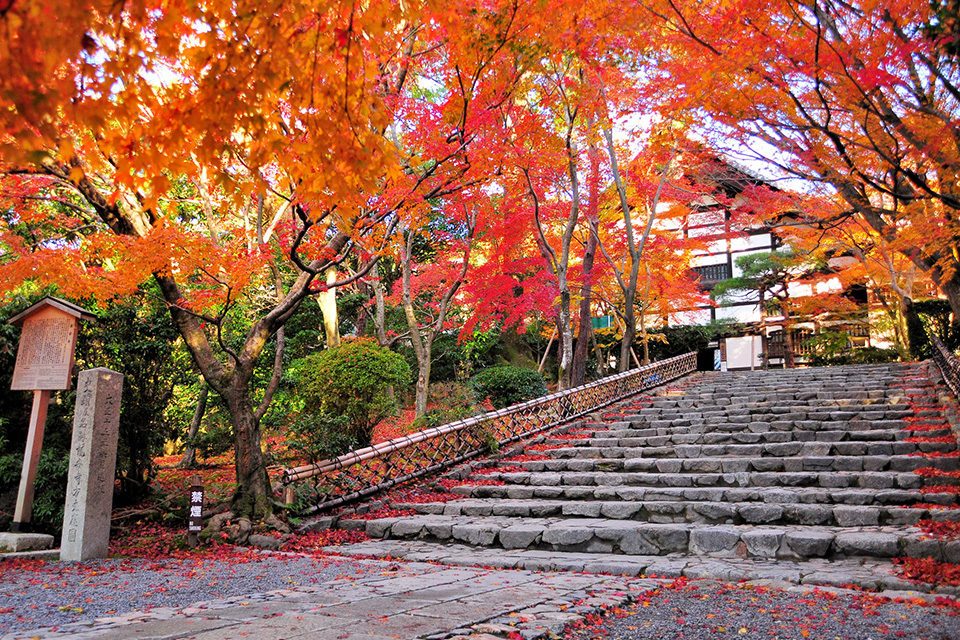 Just next to the station with same name, the Ryoan-ji Temple Station. In the rock garden, the water well engraved with the words“吾唯足知”(Happiness consists in contentment) is very popular. You can also visit the Japanese Garden in Seigenin Temple built by tea master Kanamori Sowa in Sengoku period. Please try the famous local food“Tofu soup with seven vegetables”here.
Click here for more information
Just next to the station with same name, the Ryoan-ji Temple Station. In the rock garden, the water well engraved with the words“吾唯足知”(Happiness consists in contentment) is very popular. You can also visit the Japanese Garden in Seigenin Temple built by tea master Kanamori Sowa in Sengoku period. Please try the famous local food“Tofu soup with seven vegetables”here.
Click here for more information
Myoshin-ji Temple
The Myoshin-ji Temple occurs 130,000py and with the same name tram station at there, the Myoshin-ji Temple Station. It should be said as the biggest temple in Kyoto. The 46 Tatchu sub-temples are not all open to public, but some gardens are opened for tourists in red leaves period. The roads in the temple group are open for 24 hours. So you can enjoy the red leaves while walking along the traditional Japanese short wall is absolutely a happy activities.Myoshin-ji Temple Taizo-in Temple
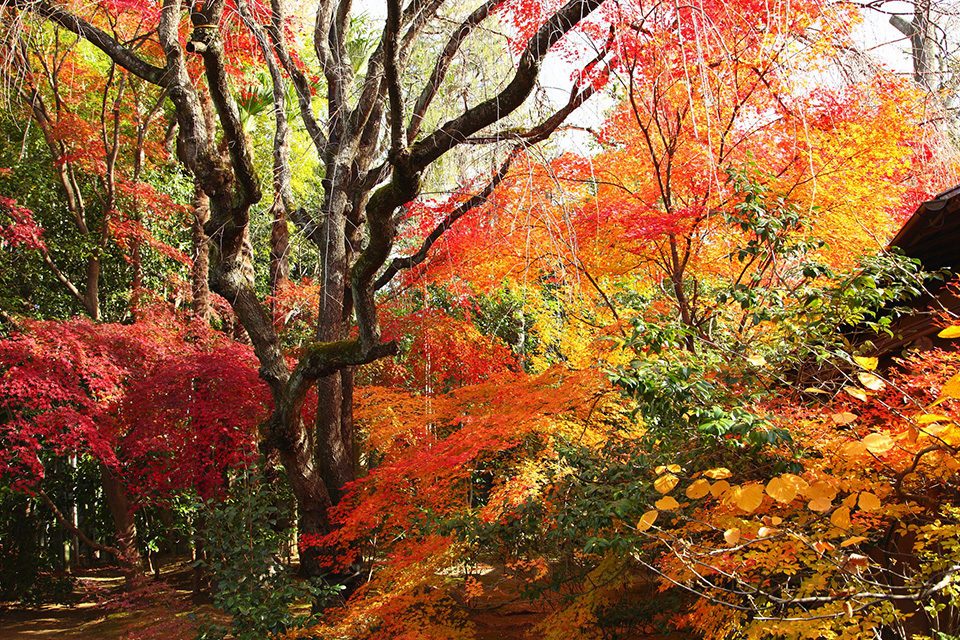 The promenade garden Yokoen is a very popular tourist spot for red leaves.
Click here for more information
The promenade garden Yokoen is a very popular tourist spot for red leaves.
Click here for more information
Keishun-in, Myoshin-ji
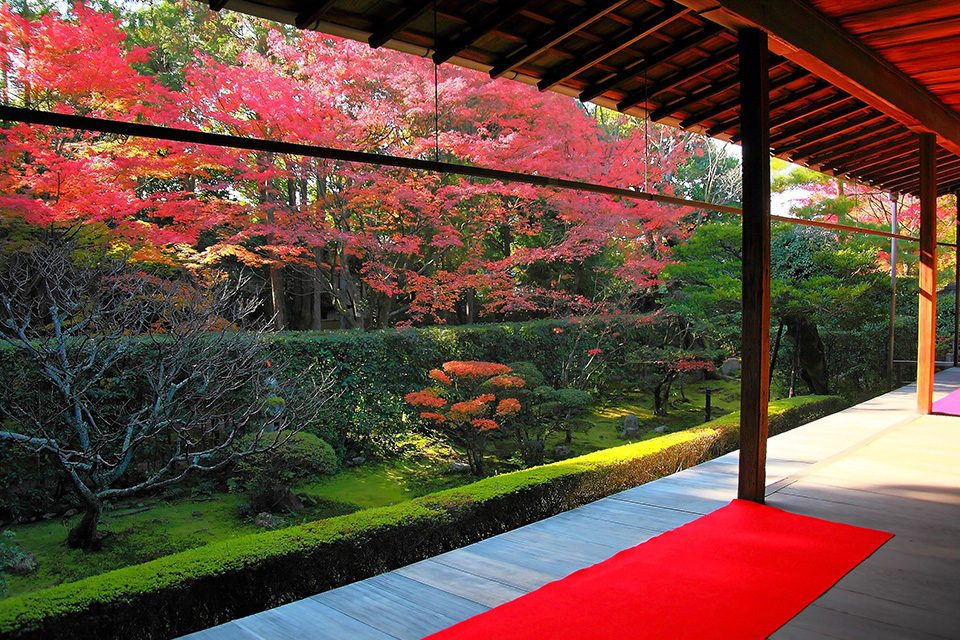 t is a Tatchu sub-temple of Myoshin-ji Temple. Same as Taizo-in Temple, it is open to public all the year. There are four gardens in it: Shinnyo Garden offers fascination of skill & dedication. Shiyoujou and Shii Garden is suitable for walks. While Wabi Garden with arrangement of Kyoto traditional red carpets for visitors to enjoy red leaves and take seat at the same time.
Myoshin-ji is located at the north of Keishun-in. Roads at here is separated by Tsuijibei (earthen wall), a traditional style short wall. As it is full of ancient feelings, that is why many Japanese costume dramas and movies be took at here. The Daiouin Temple is never open to public, but beautiful red leaves at there, so only be peeped outside the wall.
t is a Tatchu sub-temple of Myoshin-ji Temple. Same as Taizo-in Temple, it is open to public all the year. There are four gardens in it: Shinnyo Garden offers fascination of skill & dedication. Shiyoujou and Shii Garden is suitable for walks. While Wabi Garden with arrangement of Kyoto traditional red carpets for visitors to enjoy red leaves and take seat at the same time.
Myoshin-ji is located at the north of Keishun-in. Roads at here is separated by Tsuijibei (earthen wall), a traditional style short wall. As it is full of ancient feelings, that is why many Japanese costume dramas and movies be took at here. The Daiouin Temple is never open to public, but beautiful red leaves at there, so only be peeped outside the wall.
Address:
11 Hanazonoteranonakacho Ukyo-ku
- Get off at Garden station by JR railway,20 mins walk
- Get off at Myoshin-ji Temple North Entrance or Myoshin-ji Temple Bus Stop by City Bus, 5mins walk
- Get off at Myoshin-ji Temple Bus Stop by Kyoto Bus, 10 mins walk
- Free Car park in Myoshin-ji Temple
Red maple leaves period: ate November to Early December
Daishin-in Temple
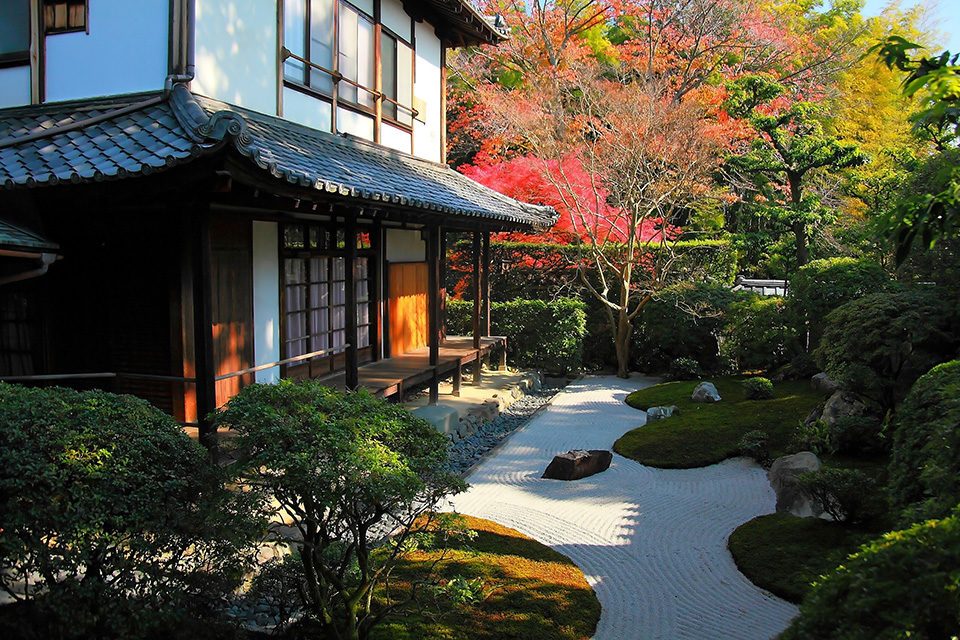 This is also a Tatchu sub-temple of Myoshin-ji Temple. Now it is used for dormitory. There are many gardens, one of it is must be introduced. It was designed by Kinsaku Nakane, a modern gardener. In his Karesansui dry rock garden “A-un Garden”, red leaves are visible.
This is also a Tatchu sub-temple of Myoshin-ji Temple. Now it is used for dormitory. There are many gardens, one of it is must be introduced. It was designed by Kinsaku Nakane, a modern gardener. In his Karesansui dry rock garden “A-un Garden”, red leaves are visible.
Address
57 Hanazonomyoshinjicho Ukyo-ku
- Get off at Hanazono Station by JR Sagano Line, 8 mins walk
- Get off at Myoshin-ji Temple North Entrance or Myoshin-ji Temple Bus Stop by City bus, 3mins walk
- Car park for 30 cars
Red maple leaves period: Late November to Early December
Daiho-in Temple
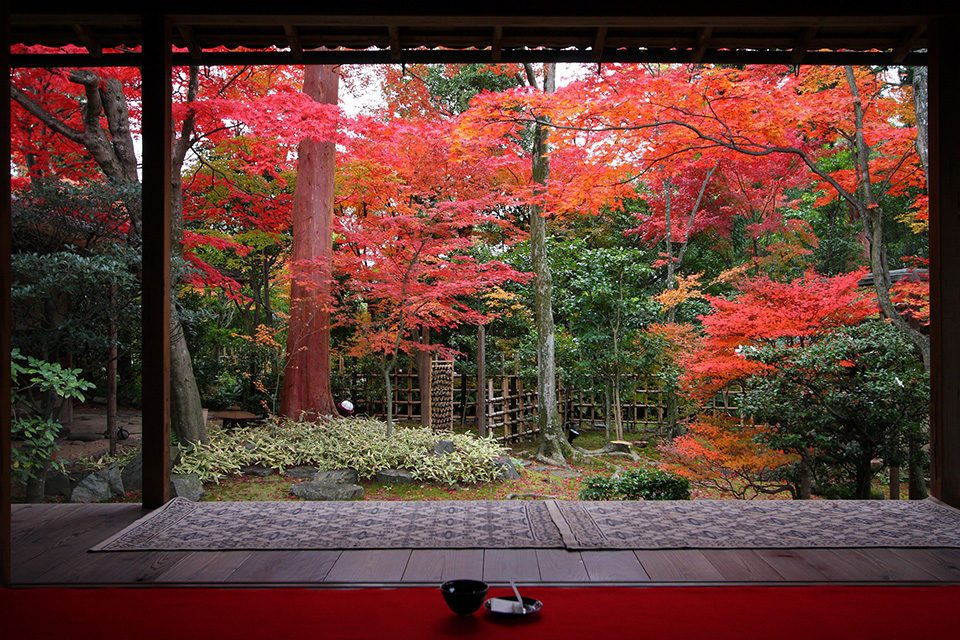 Another Tatchu sub-temple of Myoshin-ji will be open to public in spring green and deep autumn red period. In the open garden with tea drink house at the main hall school, people can enjoy both red leaves and green tea with Kyoto traditional sweet confectionery (wagashi) at the same time. A moment for peaceful.
Another Tatchu sub-temple of Myoshin-ji will be open to public in spring green and deep autumn red period. In the open garden with tea drink house at the main hall school, people can enjoy both red leaves and green tea with Kyoto traditional sweet confectionery (wagashi) at the same time. A moment for peaceful.
Address:
20 Hanazonooyabucho Ukyo-ku
- Get off at Hanazono Station by JR Sagano Line, 10 mins walk
- Get off at Myoshin-ji Temple North Entrance Bus Stop by City Bus, 5mins walk
- Car park: 30 cars (Free)
Red maple leaves: Early to Late November
Ninna-ji Temple
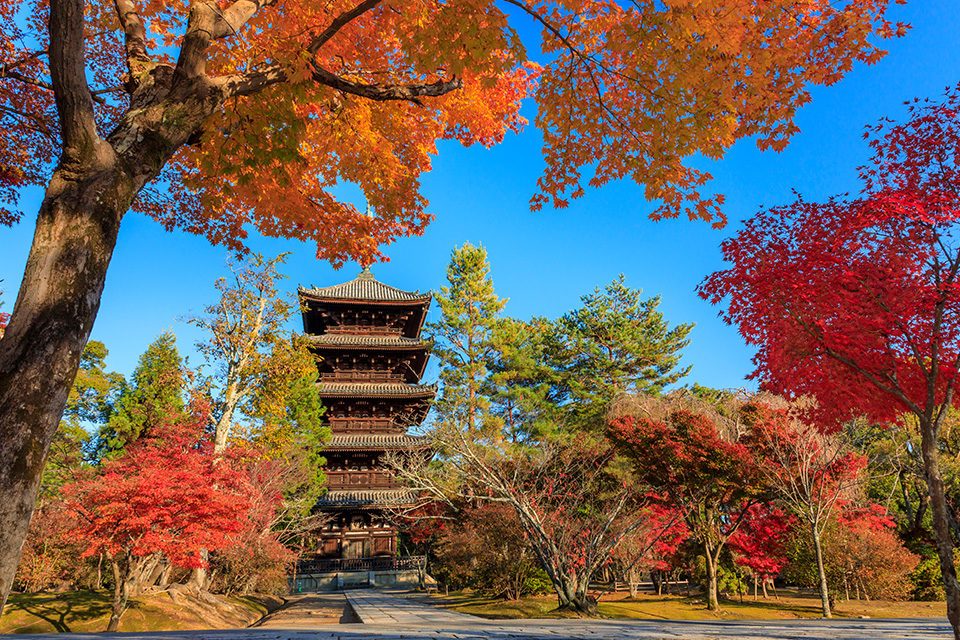
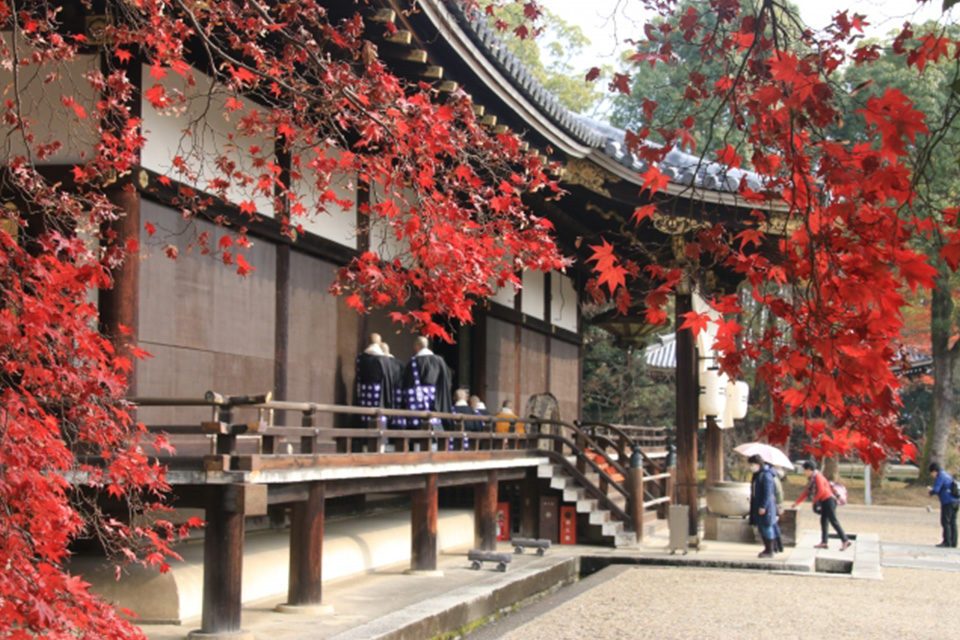 Mostly host by the Royal family or noble, enjoy the unique sakura variety“Mirozakura” (The Royal sakura) in the Omuro of Ninna-ji Temple is renowned. But indeed here is a quiet red leaves tourist spot.
The wide north courtyard locates in front of Shinden was be re-decorated by Ueji Ogawa Jihei VII. In north courtyard, other than red leaves, visitors can admire the green pine and white sand garden. Colors are naturally harmonized. It demonstrates the charm of Royal noble as the highest host position (Monzeki Jiin) of the temples. The tea house Ryoukaku Tei is transferred from the house of Ogata Korin who was a painter in Edo period.
As the south of Shinden, left side is full of sakura while the right side plants orange trees. There are also some of the red leaves to enjoy.
The back hill of Ninna-ji is Seiryuu-ji Temple , the No.36 of“Omuro 88 Temples Pilgrimage”. It is popular for admiring red leaves.
Mostly host by the Royal family or noble, enjoy the unique sakura variety“Mirozakura” (The Royal sakura) in the Omuro of Ninna-ji Temple is renowned. But indeed here is a quiet red leaves tourist spot.
The wide north courtyard locates in front of Shinden was be re-decorated by Ueji Ogawa Jihei VII. In north courtyard, other than red leaves, visitors can admire the green pine and white sand garden. Colors are naturally harmonized. It demonstrates the charm of Royal noble as the highest host position (Monzeki Jiin) of the temples. The tea house Ryoukaku Tei is transferred from the house of Ogata Korin who was a painter in Edo period.
As the south of Shinden, left side is full of sakura while the right side plants orange trees. There are also some of the red leaves to enjoy.
The back hill of Ninna-ji is Seiryuu-ji Temple , the No.36 of“Omuro 88 Temples Pilgrimage”. It is popular for admiring red leaves.
Transportation:
Get off at Emmachi Station by City Bus, 10mins walk
- Get off at Hanazono Station by JR Sagano Line, 15mins walk
- Get off at Omuro-Ninnaji Station by Keifuku Railway,3 mins walk
- Get off at Emmachi Station by City Bus, 10mins walk
- Car park: Yes.
Red maple leaves period: Mid November to Early December
Epilogue: If you buy one day pass of Randen Tram, it is not only the discount of the fare, also the discount for the entrance fees for some places. Even take the tram in normal days, but now we can enjoy the seasonal autumn foliage. Why not enjoy the red leaves on the journey of train comfortably!
